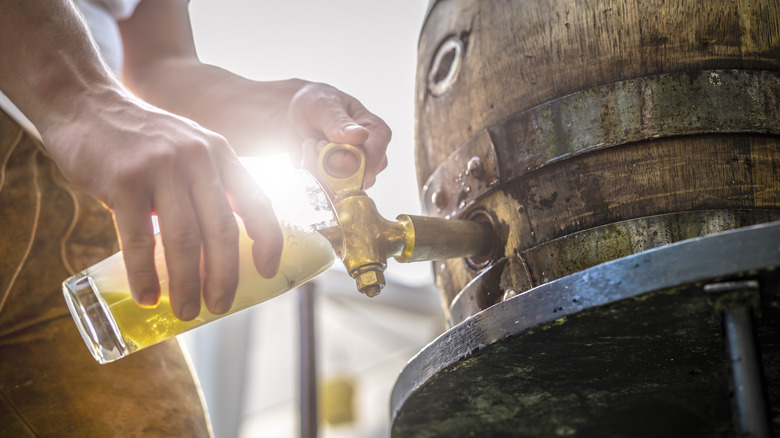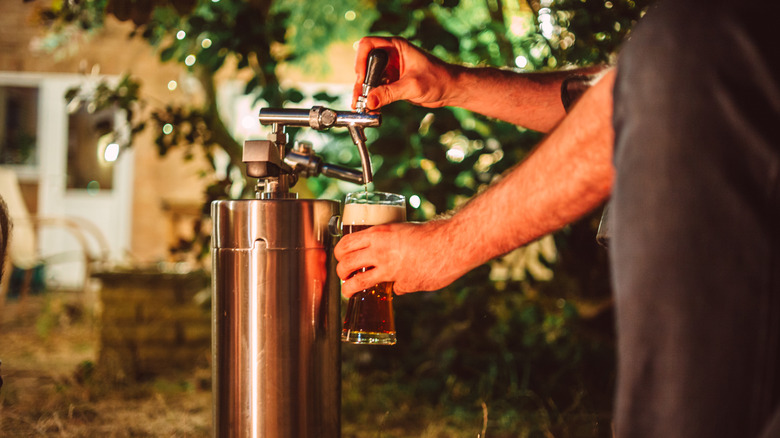Here's How Long A Keg Of Beer Will Last Once It's Tapped
If you're looking to throw a memorable backyard barbecue, birthday party, holiday bash, or even a "just because" sort of gathering, you might consider tapping a keg. (Or, making your own watermelon keg!) It's an efficient way of serving beers to a crowd, and you'll be taking into account how many pints are in a standard keg, and it's a lot: One standard keg holds 124 pints, or the equivalent of 165 12-ounce bottles.
Is it worth tapping a keg for a family reunion or small party? That depends, but let's talk about how long you have to use the rest of the beer that's in that keg. It's not as straightforward as you might expect. For starters, a keg's life is actually measured from the date that it's filled, not necessarily when it's tapped. How long it lasts also depends on what kind of beer it holds, how you're storing it, and the way that your kegerator works, so here are some general guidelines.
Pasteurized beer is good for between 90 and 120 days from the date that it's filled. For unpasteurized beer, that timeline drops to between 40 and 60 days — which means that it's incredibly important to check any dates on the keg. By the time you get it, you might have only around a month before you're going to be tapping skunky beer, and once it's tapped, the clock starts ticking in a big way. If you're using a party pump, you've got just eight to 24 hours until it goes bad.
There are a lot of factors that determine the freshness of beer
Let's stress that the eight to 24-hour guideline applies to party pumps for a very specific reason. These systems use air, and when oxygen gets into the keg, that's when the beer starts to go flat. But what if you invest in outfitting your home bar with a draft beer system?
These systems run on carbon dioxide or nitrogen instead of oxygen, which means these kegs are going to have a longer shelf life that's still based on the dates put on the keg by the manufacturer. In a nutshell, if you get a keg that's got an expiration date of December 25 and you tap it on Thanksgiving, it's going to last about a month. If you tap that same keg on December 20, you've got about five days to use it.
There's one more variable that's worth mentioning. If you don't keep your keg at the right temperature — which is generally around 38 degrees Fahrenheit, but can vary in some cases — one of two things could happen. If it's too cold, it'll freeze, but if the interior temp of that keg rises above 50 degrees Fahrenheit, it's going to start to develop a bacterial ecosystem all of its own. It goes without saying that this is incredibly bad, and here's some more food for thought: Bartenders usually avoid ordering draft beer because there's a lot that can go wrong. That includes unclean tap lines which can lead to beer that can sometimes make you ill. Bottom line? A smaller keg is better than a bad keg.

